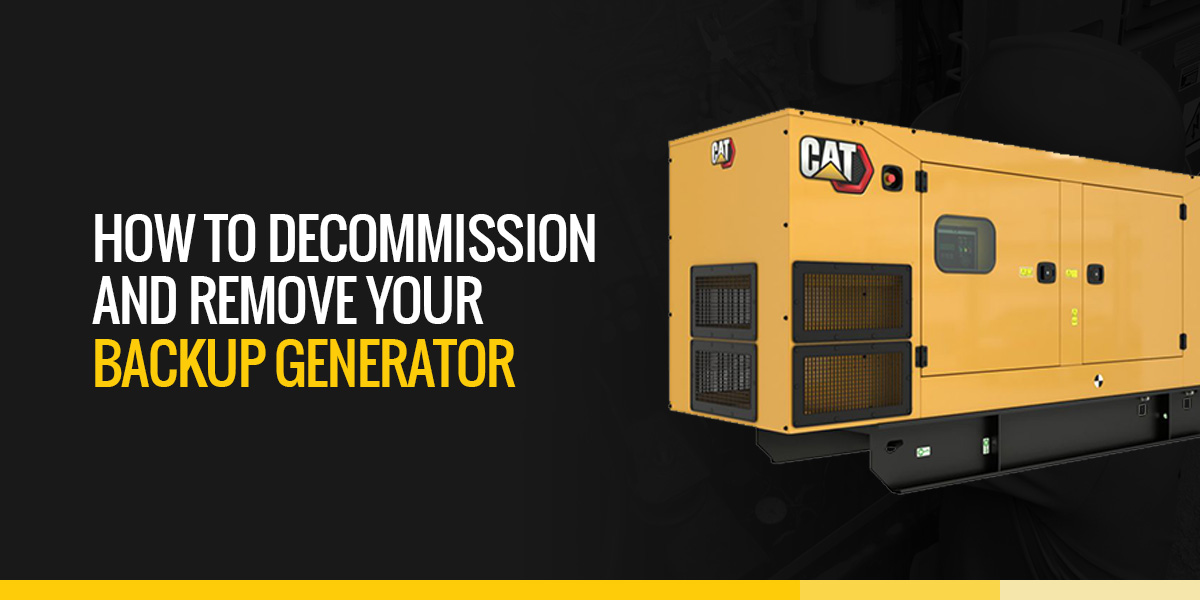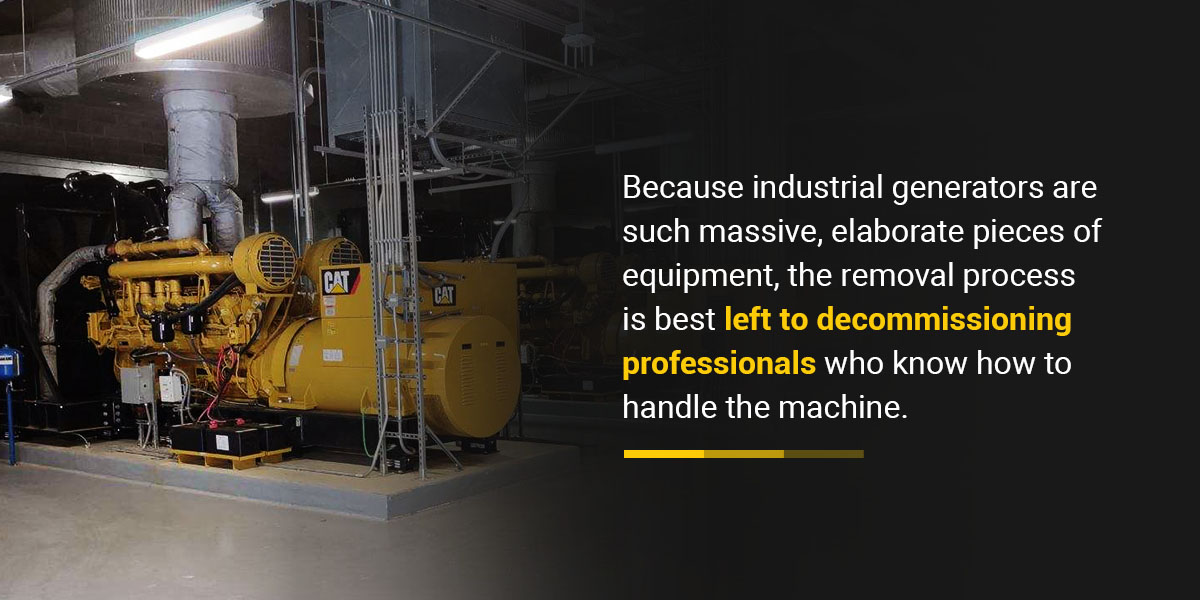

Industrial generators are durable, high-performance machines built to last for many years. However, there will come a time when you need to take the generator out of service. This process is known as decommissioning, which means disabling the generator and removing it from the facility.
Generators undergo decommissioning for a variety of reasons, such as:
If you’re curious about the ins and outs of decommissioning and removing a backup generator, explore our guide below.
Decommissioning a generator involves three phases. Before removing the generator from the facility, a skilled technician will conduct a site inspection, followed by a review process.
Let’s explore each step below.
A thorough inspection and assessment of the generator site is the first step in decommissioning electrical equipment. A generator removal technician will use this time to gather and document pertinent information about your generator, like specifications and overall condition. This data will help them devise the most efficient plan for generator removal.
During the site inspection, technicians will also audit the following features of your generator:
The site inspection is also the time for technicians to identify who will be responsible for the various tasks involved in generator removal. Some facilities use their own electricians and personnel to handle certain aspects of generator decommission while outsourcing additional tasks. Other facilities hire a generator decommissioning service to manage the whole process.
It’s important to make a plan as to who will do what beforehand so the decommissioning process runs smoothly.
Once the decommissioning provider has inspected your site, they’ll review the information they gathered and create a plan to remove your generator safely and efficiently.
Your removal vendor will make arrangements for any additional equipment needed to remove the generator and haul it away, such as an overhead crane, chain hoist, forklift, or other machinery. They’ll also consider best practices for packing the generator and its parts for transport, as well as shipping loads and regulations, which vary from state to state.
Health, legal, and environmental implications exist to govern the generator decommissioning process because it’s such a detailed, complex task. Your generator removal experts will take into account the regulations in your area to ensure the entire process complies with the law.
With the site inspection and information review complete, the final step is the generator removal. Generator removal processes vary from site to site, but decommissioning technicians generally use the following checklist once all the necessary equipment and personnel are on-site and ready to go:
Once the machine is removed from service, you can either sell it or opt for generator disposal.

Decommissioning a backup generator requires a comprehensive inspection of the facility’s electrical system, followed by the careful disconnection of numerous wires, attachments, and other parts.
Because industrial generators are such massive, elaborate pieces of equipment, the removal process is best left to decommissioning professionals who know how to handle the machine. These experts collaborate with the generator owners and other assistive personnel to properly take the generator out of service and remove it from the facility.
Outsourcing generator removal to a professional often results in a faster decommissioning process than if you’d handled it yourself, which is helpful if the generator must be out by a certain date.
Professionals are also necessary because state and federal laws regulate the parts within industrial generators. These elements must be handled and disposed of properly in accordance with the law. You could face hefty fines if your generator removal process doesn’t adhere to local regulations. Fortunately, professional decommissioning services understand the rules and how to follow them.
Finally, having your generator decommissioned professionally will ensure the process is safe for the environment and all those involved and doesn’t compromise your plant’s main electrical system.
Professional decommissioning companies can offer the following generator removal services:
If you’ve decommissioned your generator because it no longer operates or your facility needs an upgrade, you may be interested in how to acquire a replacement. Your options are to purchase a new or used generator or rent one if your power source needs are intermittent.
If your operation requires a long-term generator for primary or standby power, purchasing one is a cost-effective investment that reduces risks related to not having a perpetual power source. You can buy a new generator or opt for a used one if you’re on a budget.
In addition to state-of-the-art new equipment, Thompson Power Systems is your source for used generators. Our certified Cat® technicians service, inspect, and test every piece of used commercial and industrial power equipment at our facility to ensure used equipment buyers get a quality product.
Renting a generator is a great alternative to buying one if you need it for short-term projects or power outages. The commercial generator rental service at Thompson Power Systems allows you to meet changing electricity demands affordably and keep operating despite power outages.
Electrical power is vital to many aspects of daily life. At Thompson Power Systems, we understand how important it is for businesses to have dependable equipment that provides consistent power, and that’s why we’re a definitive partner when it comes to power generation needs.
Thompson Power Systems has been providing commercial and industrial power sources to Alabama and Northwest Florida for over 60 years. As a trusted and steadfast source for the Cat brand of backup and emergency power systems, we’ve built a reputation for quality and performance that our customers have come to appreciate and rely on.
Our invaluable customer service and expert technicians will ensure your backup generator needs are taken care of, whether you need to rent, buy, or decommission. Contact Thompson Power Systems today to learn how we can help!